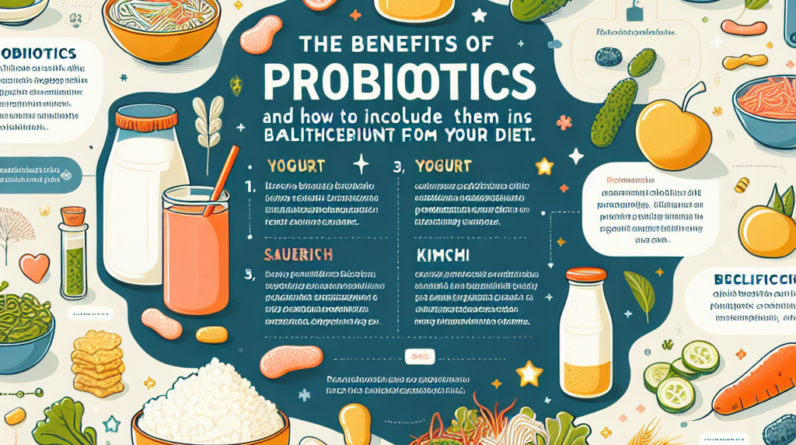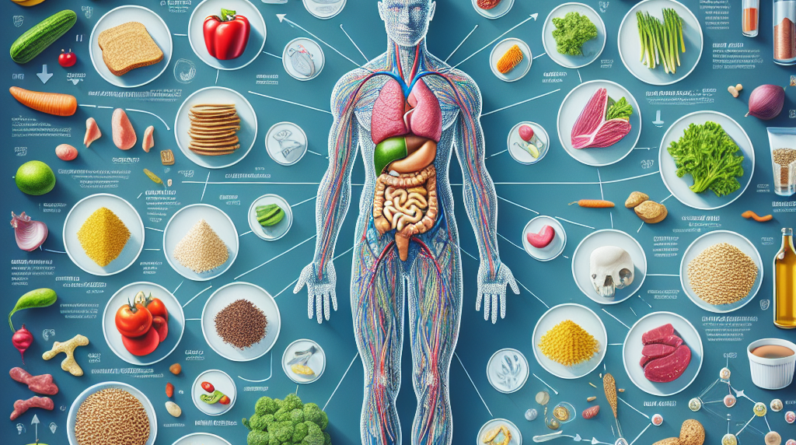
Hey there! I’m so excited to share some of my personal tips and strategies for eating well with a balanced organic diet. It’s a journey that I’ve been on for quite some time, and I’ve learned a lot along the way. So, grab a snack (maybe something organic?), and let’s dive into these five essential areas that can help you master the art of eating well!
Get a Huge Discount and Bonus! Try for 90 Days Risk Free
Whole Foods First
Understanding Whole Foods
When I first learned about whole foods, it felt like a light bulb switched on for me. Whole foods are basically foods that are in their natural state, without any processing. Think fruits, veggies, grains, and nuts. Incorporating more of these into your diet can really transform your health. I mean, who wouldn’t want to fuel their body with the good stuff?
One thing that really struck me is how much flavor and nutrition whole foods packed compared to processed alternatives. A fresh apple beats a sugary snack any day! Plus, they’re loaded with vitamins and minerals that our bodies crave. Seriously, you can taste the difference!
Over time, I’ve made it a point to prioritize whole foods when I shop. Now, I actively seek out local farmers’ markets, which are like treasure troves of fresh produce. Building that relationship with local farmers not only supports the community but also guarantees that I’m getting the freshest ingredients.
Shopping Tips for Whole Foods
Shopping for whole foods can be kinda daunting at first, especially if you’re used to the aisles of processed snacks. My advice? Start with the perimeter of the store. That’s usually where all the fresh stuff is. Stick to the fruits and veggies, and then hit the whole grain section.
Another cool trick I’ve picked up is to always read labels. If a food item has an ingredient list that’s a mile long, you might want to think twice. Aim for items that have five ingredients or fewer, and make sure they’re all things you can pronounce!
Don’t forget to experiment! Try new fruits and veggies every week. Not only does it keep your meals interesting, but you might also stumble upon a new favorite. For me, discovering purple sweet potatoes was a total game changer!
Meal Prep with Whole Foods
Meal prepping has become my best friend when it comes to sticking to a whole foods diet. By prepping meals in advance, I avoid those last-minute temptations of grabbing something processed just because it’s convenient. I usually dedicate Sunday evenings to prepping for the week ahead.
One thing I always do is make a big batch of roasted veggies. I toss in whatever I have on hand—sweet potatoes, broccoli, carrots, you name it. These can be added to salads or served with grains, making meals super quick. Trust me, it saves a ton of time and effort during busy weekdays.
Get a Huge Discount and Bonus! Try for 90 Days Risk Free
Also, don’t forget about the power of grains! I often cook a large pot of quinoa or brown rice to use as a base for multiple meals. With just a little creativity, you can create a variety of dishes with the same ingredients!
Embrace Seasonal Eating
Benefits of Eating Seasonally
Ah, seasonal eating! This has been one of the most delightful discoveries in my food journey. Eating seasonally means I’m not just supporting my health but also the local economy. Fresh produce that’s in season is generally more flavorful and packed with nutrients.
Plus, there’s something truly magical about aligning your meals with the seasons. For instance, juicy strawberries in the summer feel like a treat, whereas hearty squash in the fall is comforting as the weather cools down. It keeps my meals exciting and aligned with nature’s rhythm!
I’ve also noticed that seasonal produce often comes at a lower price. When it’s abundant, farmers are more likely to sell it at a better price compared to off-season items that have to be shipped from afar. It’s a win-win!
Need a Serious Energy BOOST? Huge Discount Try for 90 Days Risk Free
How to Incorporate Seasonal Foods
Adding seasonal foods to your diet doesn’t have to be difficult. My go-to strategy is to subscribe to a local CSA (Community Supported Agriculture). Every week, I receive a fresh basket of seasonal produce, which encourages me to try new things and get creative in the kitchen!
If a CSA isn’t an option for you, a quick internet search can provide insight into what’s currently in season in your area. Many grocery stores also label items as “in season,” which can guide your shopping.
Another method I love is creating a seasonal meal calendar. Each month, I jot down a few recipes I’d like to try based on what’s available. This way, I’m always excited to cook and eat fresh food!
Fun Ways to Enjoy Seasonal Foods
So, how can you have fun with seasonal ingredients? Think outside the box! I’ve hosted potlucks with friends where the only rule is to bring a dish made from seasonal produce. It’s a blast and encourages everyone to show off their culinary skills!
Taking a cooking class that focuses on seasonal ingredients is another great option. Not only do you learn new techniques, but you also meet like-minded individuals who are just as passionate about cooking. I’ve made some fantastic friends through these classes!
Finally, consider starting a mini herb garden at home. Fresh herbs elevate any dish and having them right at your fingertips makes cooking feel special. Plus, they’re super easy to maintain and perfect for beginners!
Mindful Eating Practices
The Importance of Mindful Eating
Mindful eating is something I wish I’d embraced sooner. It’s all about being present while you eat, savoring each bite, and truly understanding what your body needs. When I first started, I realized how often I was munching on snacks mindlessly—totally zoned out while scrolling through my phone!
The idea is to engage all your senses during meal times. Take the time to appreciate the colors, textures, and flavors of your food. Honestly, this has made meals more pleasurable for me. It’s not just about filling my stomach; it’s about enjoying and connecting with what I eat.
Good Health Solution is Easier Than Most People Think!
Take a Look for Yourself!
Another benefit of mindful eating is that it helps with portion control. When you’re focused, you’re less likely to overeat. I’ve noticed that I stop when I’m satisfied, rather than stuffed. It’s such a liberating feeling!
How to Practice Mindful Eating
A simple way to practice mindful eating is to set aside distractions during meals. Turn off the TV, put your phone away, and create a calming atmosphere. This feedback loop of distraction often leads to overeating, so creating that space has really changed my perspective.
I also like to start each meal with gratitude. Taking a moment to appreciate the food before me—in terms of its nourishment and the effort that went into growing or producing it—makes such a difference in my dining experience.
You can even try eating slowly. Putting your fork down between bites or taking a sip of water can help pace your meal and allow you to notice fullness cues more easily. Trust me, it’s a game changer!
Creating Your Mindful Eating Rituals
Rituals can turn ordinary meals into special occasions. For me, setting the table nicely or lighting a candle makes an everyday dinner feel celebratory. It helps create a nurturing environment that encourages mindfulness.
Try keeping a food journal, too! Noting how certain foods make you feel can help you connect your meals with your mood. I’ve been surprised to learn what fuels me and what doesn’t!
Finally, I often invite friends to join me for shared meals. This collaborative aspect brings joy and connection to food, enhancing the mindful eating experience. Plus, it’s a great way to share health tips and recipes!
Making Organic Choices
The Benefits of Organic Foods
Embracing organic foods has transformed my diet in so many positive ways. Organic fruits and veggies are grown without synthetic fertilizers and pesticides, which means I’m nourishing my body without any harmful chemicals. Can’t argue with that, right?
Another benefit is the taste! I can genuinely say that organic produce often tastes fresher and more vibrant. There’s something about biting into an organic carrot that makes you feel like you’re really connecting with your food.
Buying organic also supports sustainable farming practices, making a positive impact on our environment. It’s a step towards ensuring that future generations can enjoy the same clean and healthy foods that we do today. Now, that’s meaningful eating!
How to Choose Organic Foods
When transitioning to organic, my best advice is to start small. Focus on the “Dirty Dozen”—the fruits and vegetables that contain the highest pesticide residues. Gradually, I replaced these with organic versions, and it felt manageable.
Don’t be afraid to ask questions at your local grocery store or farmer’s market. Many sellers are knowledgeable about their products and can help guide your choices. I always enjoy chatting with farmers about their growing practices!
Online resources are also a great help! Websites like the Environmental Working Group provide lists of organic and sustainable foods. This information has reinforced my commitment to organic eating and has made it easier for me to navigate grocery store choices.
Incorporating Organic Foods into Meals
I’ve found creative ways to incorporate organic foods into my everyday meals. For instance, incorporate organic grains and legumes into your diet—things like quinoa, brown rice, or lentils can be easily swapped in. It boosts nutrition without sacrificing flavor!
You can also try to grow a few organic herbs or veggies at home. Even a small windowsill herb garden can yield a surprising amount of produce. The satisfaction of eating something you grew is genuinely one of a kind!
If you’re short on time, consider pre-packaged organic snacks or meal kits. They can help you get started on the organic journey without feeling overwhelmed. Just make sure to read the labels to stick with minimal processing.
Frequently Asked Questions
1. What are the main benefits of choosing an organic diet?
Organic diets eliminate exposure to harmful chemicals, support sustainable farming, and often provide better-tasting food. Plus, they can promote a more nutritious overall diet.
2. How do I start incorporating whole foods into my meals?
Begin by filling your cart with fresh fruits, vegetables, whole grains, and lean proteins. You can gradually reduce processed foods and experiment with new whole food recipes.
3. Is it more expensive to eat organic?
While organic foods can sometimes be pricier, focusing on in-season produce and shopping at local markets can mitigate costs. Also, fewer chemicals and better farming practices often lead to better quality. Investing in your health pays off!
4. How can I eat mindfully, especially when I’m busy?
Set aside dedicated meal times, eliminate distractions, and focus on eating slowly. Bringing awareness to your food even in short moments can significantly enhance your dining experience.
5. Can I successfully maintain an organic diet on a budget?
Absolutely! Choose seasonal, local organic produce, look for sales, and consider growing your own. Simple swaps in your shopping habits can make organic eating accessible!








